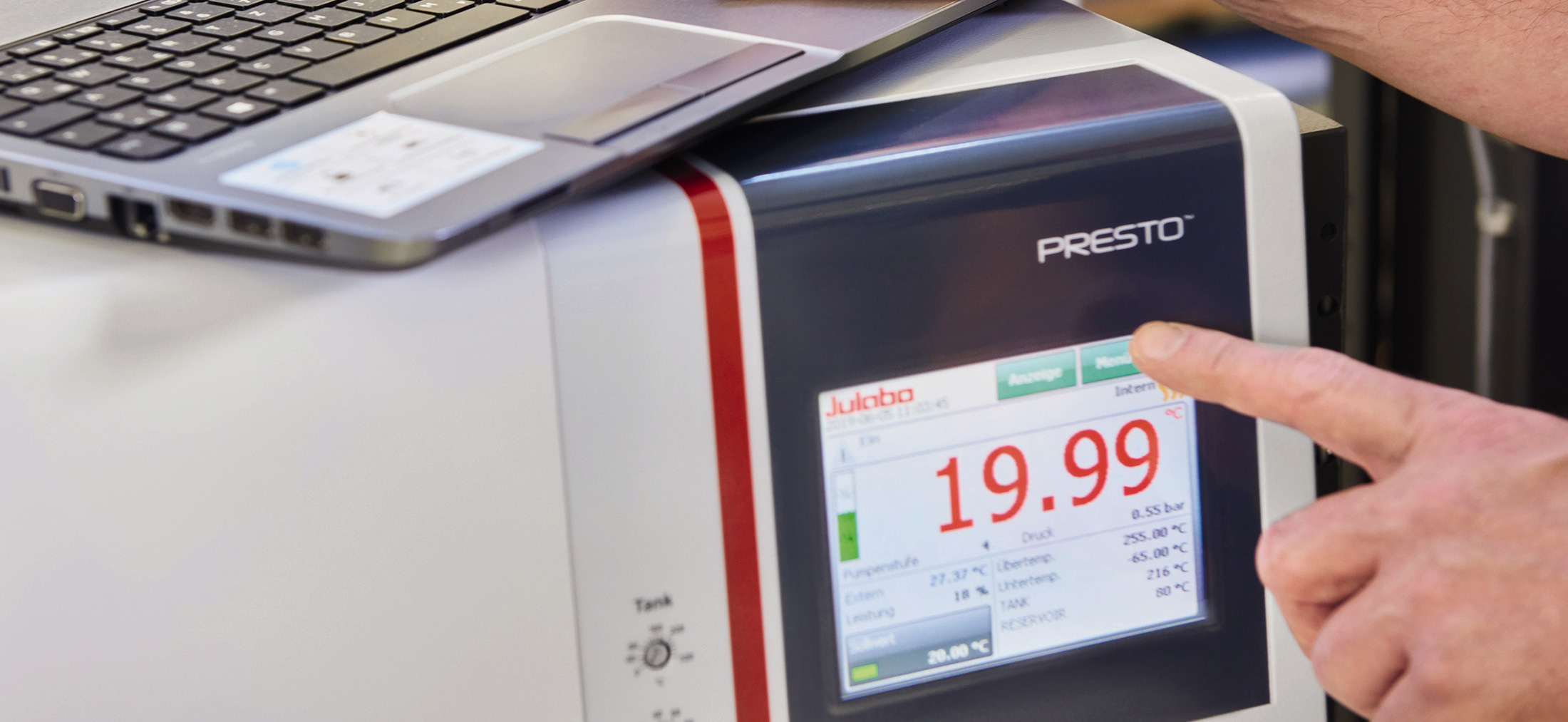
How Liquid Temperature Control Measurements Affect Your Application
Liquid temperature control equipment is used to heat and cool materials, objects, and substances. Laboratories and industries use Temperature Control Units (TCU) to reach, maintain, and replicate specific temperature set points. For instance, a set point of -20°C will keep the object, substance, or material at that temperature.
When deciding on a TCU, it is important to consider its various specifications and how they will affect your application or process. This document will explain basic temperature measurement specifications and what to consider when selecting a refrigerated circulator, heating circulator, heating immersion circulators, recirculating chiller, cooler, or water bath for your facility.

Working Temperature Range
A working temperature range indicates the safe operating temperature range for the TCU, including the maximum operating temperature. Bath fluid needs to be considered when fully understanding the usable temperature range for a unit. The type of bath fluid used can decrease the functional temperature range. The fluid flashpoint or boiling temperature at high temperatures is vital to take into consideration, as well as the viscosity and freezing point at low temperatures.
Temperature Accuracy
Temperature accuracy is the deviation between a measured temperature value and its actual temperature value. This measurement indicates the units accuracy and how closely the temperature value aligns with international, standard values.
Temperature Stability
Temperature stability is the maximum deviation from a standard temperature value over time. The measurement demonstrates how well the circulator will maintain its set point.
Temperature Uniformity
Temperature uniformity is the maximum difference in temperature at different measuring points in the bath. This is calculated by using the highest mean value minus the lowest mean value. The specifications are based on standards and can vary depending on operating conditions. Temperature uniformity is an essential measurement for calibration tasks.
Ambient Conditions
Ambient conditions are an important consideration when choosing the proper chiller, circulator, cooler, or water bath for your laboratory or facility. Ambient conditions, including room temperature and relative humidity, can impact the performance of the temperature control unit. The ideal ambient conditions are based on a standard of 20°C and 50% relative humidity. Refrigerated units perform optimally in conditions with lower temperatures and lower humidity. To ensure the incident-free operation of a refrigerated TCU, the temperature shouldn’t drop below 5°C or rise above 40°C.
Conclusion & Other Considerations
There are many other specifications to consider when choosing the right TCU for your needs, including its heating and cooling capacities, power options, electrical requirements, pump capacity flow pressure, pump capacity flow rate, weight, dimensions, and other factors. For more information on choosing the right temperature control unit, read our article: Do You Have the Right Temperature Control Equipment for Your Laboratory?
|
To find out more: |
